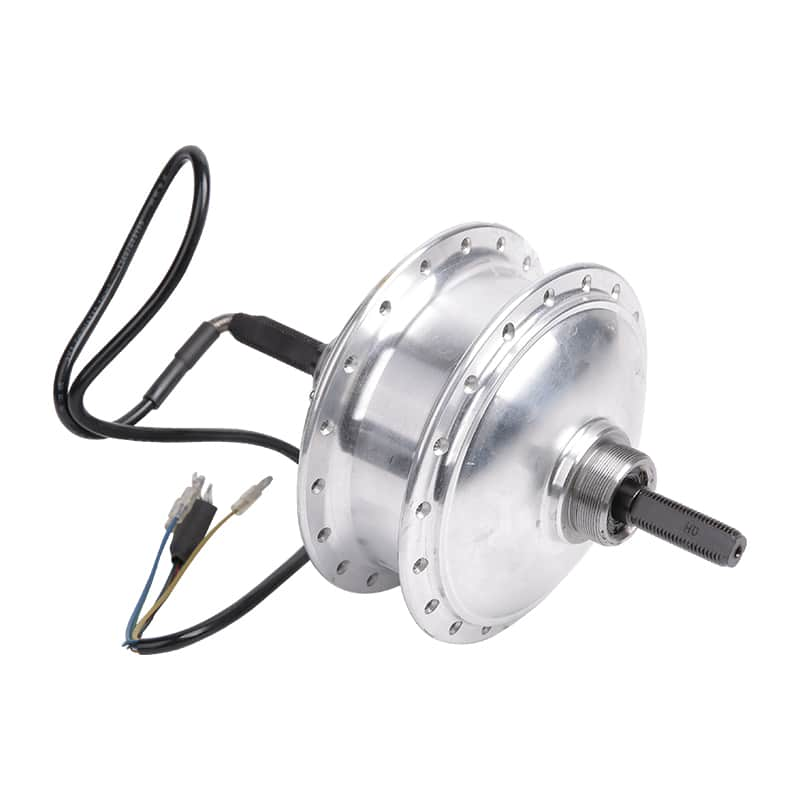Summary:1. Regular Cleaning:
Regular cleaning of the e-bike motor is essential for preventing the accumulation of dirt and debris. A dirty motor can lead to i...
1. Regular Cleaning:
Regular cleaning of the
e-bike motor is essential for preventing the accumulation of dirt and debris. A dirty motor can lead to increased heat buildup, potentially causing overheating issues and impacting performance. Utilize a soft brush or compressed air to remove dirt from the motor's exterior. In coastal areas, where salt and sand can be prevalent, this step becomes even more critical to prevent corrosion.
2. Check for Loose Connections:
Ensuring that all electrical connections are tight is crucial for the e-bike's electrical system. Loose connections can result in voltage drops, affecting the motor's performance. Regularly inspect connectors, wires, and terminals for any signs of looseness or corrosion. For instance, connectors on the battery and controller should be securely fastened to maintain efficient power transmission.
3. Lubrication of Moving Parts:
In e-bikes with geared motors, regular lubrication of moving parts, such as gears, is necessary to reduce friction and wear. Apply an appropriate lubricant as recommended by the manufacturer. For example, a lithium-based grease can be suitable for gear lubrication, enhancing the overall efficiency of the motor and extending its lifespan.
4. Inspect for Wear and Tear:
Regular visual inspections of the motor casing and components help identify any signs of wear, corrosion, or physical damage. For instance, a cracked casing may allow moisture to penetrate, potentially leading to internal damage. Timely identification and addressing of such issues can prevent more extensive and costly repairs down the line.
5. Battery Maintenance:
Proper battery maintenance is crucial for the e-bike motor's power source. Follow the manufacturer's recommendations for charging practices, avoiding overcharging or deep discharging. Regularly check the battery for any signs of swelling, leaks, or reduced capacity. For example, if a lithium-ion battery shows signs of swelling, it should be replaced promptly to prevent safety hazards.
6. Tighten Loose Bolts and Screws:
Due to the vibrations experienced during rides, bolts and screws can gradually loosen. Check and tighten all fasteners associated with the motor, such as those securing the motor mount or housing. Neglecting this maintenance step could lead to components shifting or becoming misaligned, affecting the overall stability of the motor.
7. Keep the Motor Cool:
Overheating is a common concern for e-bike motors, especially during prolonged or strenuous rides. Ensure that the motor has proper ventilation and is not obstructed by debris. In hotter climates, riders may consider auxiliary cooling solutions, such as fans or heat sinks, to enhance the motor's cooling capacity.
8. Test Brakes Regularly:
Some e-bike motors integrate with the braking system, especially in regenerative braking setups. Regularly test the brakes to ensure they respond effectively and smoothly. In the case of regenerative braking, verify that the system is efficiently converting kinetic energy back into electrical energy, contributing to improved overall efficiency.
9. Firmware and Software Updates:
E-bike motors with programmable features may receive periodic firmware or software updates from the manufacturer. These updates can introduce performance enhancements, bug fixes, or new features. Keeping the motor's firmware up-to-date ensures that riders benefit from the latest improvements in technology and functionality.
10. Check Sensor Alignment:
E-bike motors often utilize sensors, such as pedal assist sensors or torque sensors, to provide a seamless riding experience. Ensure these sensors are correctly aligned to maintain accuracy. For example, if the pedal assist sensor is misaligned, it may not accurately detect the rider's pedal input, affecting the responsiveness of the motor.
11. Inspect Wiring for Damage:
The wiring associated with the motor is susceptible to wear and tear, especially in areas exposed to constant movement and vibration. Regularly inspect wiring for any signs of damage, such as fraying or exposed wires. Promptly address any issues to prevent electrical malfunctions that could compromise the motor's performance.
12. Store Properly:
Proper storage conditions are vital for maintaining the health of an e-bike motor, particularly when the bike is not in use for an extended period. Store the e-bike in a dry and cool environment to prevent moisture-related issues. If storing for the winter, remove the battery and store it separately in a cool, dry place.
13. Professional Inspections:


